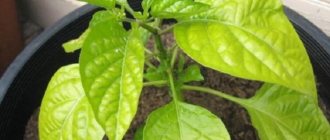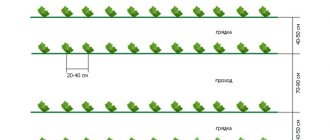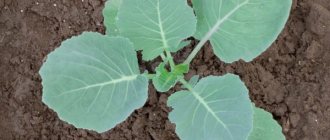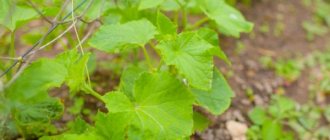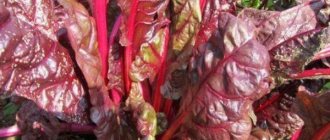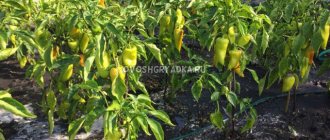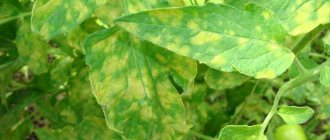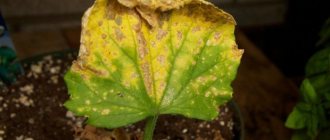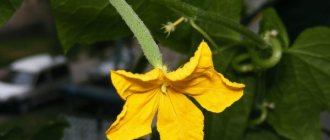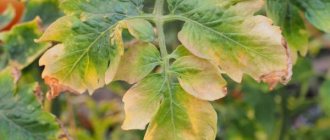Gardening » Citrus » Mandarin
0
1209
Article rating
Kira Stoletova
If the leaves of a tangerine fall, curl and turn yellow, the ovary crumbles, the fruits and roots rot, the branches turn black, it means the tree is affected by the disease. To save the plant, diagnostics are carried out, the causes are discovered and the necessary treatment measures are taken.
Mandarin leaves are turning yellow
Reasons for the falling leaves of indoor tangerines
The fall of greenery in tangerines is a rare phenomenon . If several leaves have fallen off the tree, but the crown has not thinned out, there is no need to worry. The lifespan of each sheet plate is 3 years. Then they fall off, and new greenery grows in their place.
Slight leaf fall can be observed in the fall, usually in November, but this also will not affect the density of the crown. This phenomenon is associated with the cyclical life of the plant.
If leaves fall in large quantities, the plant is inspected for infections and pests, and the growing technology is changed. This problem indicates errors in care.
Note! Mandarin is an evergreen plant. Heavy leaf fall should not be observed even in the cold season.
Unsuitable growing conditions
Indoor citrus fruits are demanding in terms of growing conditions. In an uncomfortable climate, they begin to shed their leaves and turn yellow. The cause of this problem is the following unfavorable factors.
Low or high temperature
For tangerine, room temperature (+20...+22°C) is considered the most comfortable, but the indicators can vary within +18...+26°C. If the temperature is below +2°C, the tree freezes, loses its leaves and dies. At temperatures below +15°C, the plant enters a dormant state, in which it will remain for several months. If, with the arrival of spring, the temperature does not rise to comfortable levels, the tree will begin to shed its leaves. At temperatures above +30°C, the tangerine crown will dry out.
Temperature changes
Sudden temperature changes are detrimental to tangerines. The problem arises if you take the tree outside from the apartment, bring it back into the house, or send it for the winter without first hardening it. To avoid leaf drop and other symptoms of stress, the plant is brought into new conditions gradually, increasing the time it stays there every day.
Drafts
They are dangerous for citrus trees and often cause wilting, yellowing and falling of the crown. Mandarin should not be placed next to an open window or placed in winter on a window whose cracks are blown by a cold wind.
Lack of lighting
The leaves fall off if the tangerine is in the active growth phase in intense light for less than 12 hours. To prevent this problem from arising, the plant is placed on a southern or southwestern windowsill. If there is not enough light, fluorescent lamps are used.
Exposure to the scorching sun
Direct sunlight is as harmful to a tangerine tree as a lack of light. From 12 to 16 o'clock the sun can scorch the leaves. During this period, the window is shaded with a translucent curtain.
Low humidity
Citrus fruits are tropical and subtropical plants. They need high humidity. To ensure suitable conditions, the tree is sprayed daily with warm water in summer, spring and autumn. In winter, if the pot of tangerine is in a cool room, there is no need to do this.
If it is in a heated room, spraying is continued, and an air humidifier or a container of water is placed near the citrus. If the tree is on a windowsill under which there is a battery, hang a damp cloth on the device to protect the plant from hot, dry air.
Wrong wintering
In winter, citrus trees need a state of rest. To ensure this, the temperature is lowered to +8...+10°C. This must be done at least once every 3 years. Otherwise, the tree will become exhausted, begin to dry out and shed its leaves.
Errors in care
The reason for abundant leaf fall often lies in improper care. Let's look at the most common mistakes gardeners make that cause this problem.
Waterlogging of the soil
If you fill the soil, the water will stagnate . In such conditions, fungi and bacteria quickly multiply, the root system rots, and nutrients are washed out of the soil. All this causes leaves to fall.
To avoid such a situation, the tangerine is watered as the top layer of soil dries with a small amount of water in the summer and 2-3 times a week in the winter.
Dry soil
Rare watering also does not contribute to the normal development of citrus fruits. Dry soil encourages the development of certain types of fungi and pests, and also prevents the absorption of nutrients.
No transfers
Transplants are done as the pot fills with the root system. If this is not done, the plant will be cramped, it will not be able to fully develop, and the roots will begin to die. Over the course of several years, the soil in the pot becomes depleted and becomes saturated with harmful salts. This cannot be corrected by fertilizing; a complete replacement of the soil is necessary.
Incorrect transplant
When replanting a tangerine, it is important to work carefully. If the root system is significantly damaged, the leaves dry out and fall off. The same thing happens if the container chosen for transplantation is too small.
Lack of elements
Mandarins often contain flowers, green ovaries, and ripe fruits at the same time. This plant spends a lot of resources on this. So that it has time to recover and does not lose its greenery, fertilize every 1-2 weeks.
Acidic soil
Citrus requires slightly acidic or alkaline soil. In acidic soil, problems with the crown (leaves and branches) begin.
Watering with cold water
To water the lemon, use water whose temperature is as close as possible to the indoor temperature. Cold liquid damages the roots and causes them to rot.
Diseases
Many diseases eventually lead to leaf drop. This is what causes the tree to die. The list shows the most common tangerine diseases with a similar symptom:
- Chlorosis. Occurs due to iron deficiency. This is caused either by the lack of fertilizing with the required element, or by watering the mandarin with chlorinated water or using fertilizers with chlorine. To get rid of the problem, iron sulfate is added to the soil.
- Malsecco. The main symptom of this disease is the plant dropping its leaves. Moreover, they begin to fall from the top. The disease cannot be treated; diseased citrus is thrown away.
- Gommoz. Also leads to thinning of the crown. The disease is recognized by characteristic cracks in the bark and gum secretions. To save the plant, the affected areas are cleaned with a sharp knife, then treated with garden pitch and copper sulfate.
- Root rot . The disease affects only the root system, so it can only be noticed in the later stages, when the leaves have turned yellow and leaf fall has begun. To save a tree, it is dug up, the roots are washed with warm water, and then all affected areas are cut off. The remaining root system is disinfected with copper sulfate. The treated plant is transplanted into disinfected soil, watered with a root formation stimulator and greenhouse conditions are provided.
Pests
Pests are no less dangerous than diseases. Moreover, the greatest threat is posed by those that feed on plant sap. It is they that lead to abundant leaf fall and the imminent death of the tangerine:
- Shield. Yellow or brown convex formations appear on the trunk and underside of leaf blades along the veins. To remove the larva, the affected areas are wiped with kerosene or the pest is scraped off directly with a knife. After the main treatment, the wood is washed in the shower and sprayed with soapy water.
- Spider mite. The inside of the leaf blades is covered with cobwebs and small, often red insects. To get rid of the pest, the tree is washed in the shower and then sprayed with a soap solution. The procedure is repeated every 5 days at least 3 times.
- Aphid. The inside of the leaves and young shoots are covered with colonies of green or black insects. They are fought like spider mites.
- Thrips. Small black or transparent insects. The control method is the same as with aphids or spider mites.
Description of the disease
To answer the question why tangerine leaves turn yellow, curl and dry, become sticky to the touch, and become covered with a fluffy white coating, under which brown lumps form, you need to determine the source of the problem. The reasons for this state of the plant lie in damage to the pest - the mealybug.
Mealybug is a small insect that sucks sap, penetrating inside the plant. The result of its activity is white discharge similar to pieces of cotton wool. Small individuals have oval bodies 3-6 mm long. Only the larvae are harmful to indoor crops; adults are not parasitic. Places where insects accumulate: foliage, young shoots, buds, flowers, roots.
The larvae suck buds and young shoots and move quickly along the surface. Mealybug slows down tree growth. Today there are more than 1,500 species of insects that live and develop in various conditions.
All parts of the tree become sticky because they are covered with sweet syrup during the life of the parasite. A black coating appears on the sweet syrup - this is a sooty fungus. If the disease is not detected in time, the homemade tangerine tree will shed yellowed leaves and fruits and quickly dry out.
If young shoots have time to form, their shape will be deformed. In rare cases, the root of the tree is affected. For decorative varieties of citrus fruits, there is special care aimed at preventing the appearance of the pest.
If the pest is exterminated, and you are still wondering why the tangerine leaves are turning yellow or why the tangerine leaves are falling off, then determine whether the growing conditions are normal. For example, when the temperature decreases, humidity increases, or when spoiled soil is used, the plant begins to hurt.
How to save a tangerine tree
If the problem lies in repeatedly flooded soil, watering is temporarily stopped. When the soil dries, the tree is dug up and the root system is inspected for diseases and damage. Then the tangerine is transplanted into new disinfected soil. At first, it is recommended to water it not directly, but by pouring water into a tray under the pot.
If the soil dries out for a long time, you should not immediately water the tangerine abundantly. Water is poured into the pot little by little, taking 2-hour breaks between waterings. After two days, they begin to water the tangerine according to the correct pattern.
Normalize the temperature in the room. The plant is placed on a southern windowsill. Other bugs are corrected.
After eliminating the cause of leaf fall, the mandarin is resuscitated. This process consists of the following steps:
- The tangerine is covered with a bag, the edges of which are fixed on the pot. This will help create the greenhouse conditions necessary for the plant to recover. The package is removed every day for 15-30 minutes.
- It is advisable to temporarily remove the tree from the windowsill. Instead, a phytolamp or luminescent device is placed next to it, which should work for at least 12 hours.
- Every day the plant is sprayed with Epin solution. Once a week, add “Kornevin” to the water for irrigation.
Such conditions are provided to the tangerine until new leaves begin to appear. After this, the frequent use of growth stimulants is stopped, and the duration of ventilation is increased, gradually completely dismantling the greenhouse.
To speed up the growth of green mass, fertilize with nitrogen (ammonium nitrate). It is also recommended to add superphosphate and potassium salts to the fertilizer.
When the young leaves become larger, the tree is watered with a solution of microelements or a multicomponent fertilizer prepared according to a folk recipe.
Folk remedies
When treating houseplants, they try not to use chemicals, because... There are effective options for removing pests using natural remedies.
Solutions used to control pests:
- If the leaves of indoor mandarin turn yellow, treat them 1 r. in 7 days, garlic or onion juice with soap solution.
- Take 1 tsp. soap, melt in hot water, add 1 liter of water and 1 tbsp. l. alcohol (2 tbsp. vodka). Spray the entire tangerine with the mixed solution. It is better to cover the soil in advance. After a day, rinse with warm water. Repeat after 3-4 days.
- A garlic solution is effective in the fight against scale insects. To prepare it you will need 25-70 g of garlic. Clean it and mash it, pour 1 liter of boiling water. Let the solution stand for 6 hours. Then strain the solution and spray the tree.
- Horsetail tincture is effective in the fight against scale insects. Pour boiling water over some horsetail and leave for 2 days. Water the tree with the resulting solution.
- To revive your tangerine, spray the tree with an olive oil solution. Mix 1 liter of water with 2 tbsp. l. olive oils
- Use calendula tincture. Dampen the brush in it and coat the affected area. Do the procedures in the evening, hide the tree from the sun for 2 days.
If you find that a tangerine is dropping its leaves, you quickly need to remove the tree to save neighboring indoor crops from spreading the disease, since the pest can move onto them. Inspect all nearby plants every day for a month. Treat the area where the damaged plant was located with a solution of alcohol and soap.
If the tree does not bloom, has lost all its green leaves, has dried out, the pistils have fallen off, also use soap-kerosene emulsion, honey-soap solution, pine extract (dissolve 2 tablespoons in 0.5 liters of warm water).
Other problems and methods for solving them
In stressful situations and with improper care, tangerine leaves may not fall off, but change their appearance for the worse. The cause of the problem is judged by the way they look.
The leaves are drying
If the leaves turn yellow, curl inward and dry out, the reason lies in poor and infrequent watering or lack of lighting. In both cases, not only the greenery often dries out, but also the branches.
To correct the situation, resume normal watering of the tangerine. The pot with the tree is moved to a well-lit place.
Note! In summer, it is useful to place tangerines in the garden or on the balcony.
The tips dry out or the leaves turn yellow
If the tips of the leaves dry out, the problem lies in excessive watering. To correct the situation, do not water the plant until the soil is at least half dry. Then the tangerine is replanted or watered with a light pink solution of potassium permanganate.
The same symptom occurs in dry air. Regular spraying of the crown and installing an air humidifier in the room will help cure the tangerine.
The leaves turn yellow and become spotted if the plant is infected with spider mites or other pests. How to deal with them is described above. The reason often lies in illness.
The tangerine has dropped all its leaves
If absolutely all the leaves have fallen from a tree, this indicates an extreme degree of neglect of its condition. This can happen for any of the reasons described above, if the citrus grower has ignored the alarming symptoms for a long time.
Note! The tangerine will suddenly drop its leaves if the soil is too dry and then flooded.
What to do if the tangerine has dropped all its leaves:
- It is placed in greenhouse conditions. To do this, put a bag on the tree and fix it on the pot. Air the tangerine every day, removing the bag for 15-20 minutes.
- Every day, the crown and trunk of the tree are generously sprayed with a warm Epin solution.
- At this stage, the plant is not watered. It is recommended to place a wet floral oasis, expanded clay or ordinary cotton wool soaked in water in the tray underneath.
The tree will remain in such conditions until shoots or leaves appear on it. After this, the plant is watered with the Kornevin solution and the duration of ventilation is increased.
When the leaves and shoots grow, dry branches and other parts of the plant are cut off. The cut areas are covered with garden varnish.
The leaves are falling
The plant has entered a dormant period if it sheds its leaves from October to February. There is no reason to worry. Until March, the tangerine must be moved to a cool room (15 °C), and the volume and frequency of watering must be reduced.
Reasons that require adjustment:
- dry air;
- large pot;
- when planting, the root collar was deepened;
- the soil is poor and lacks potassium;
- bad light;
- drafts;
- waterlogging of the soil.
The air is humidified using household devices (air humidifiers) and by spraying the crown with water. Planting flaws are corrected, providing the tree with an optimal microclimate. For proper nutrition, tangerines are fed with potassium nitrate.
The lack of natural light is made up for with artificial lighting.
Preventive measures
It is not always possible to save a tangerine that is losing its leaves. Therefore, it is important to follow the rules of prevention:
- provide frequent watering with a small amount of warm water;
- spray the tree with a spray bottle;
- fertilize every 2 weeks, alternating mineral and organic;
- ensure optimal temperature and light indicators;
- wash the tangerine in the shower every week;
- inspect for pest damage;
- harden the plant before moving it to new conditions;
- Replant annually for the first 3 years, then once every 2-3 years.
Pests
Dangerous pests of tangerine
are spider mites and scale insects.
To
prevent pests,
you should wash the tangerine with soap and water once a month. To do this, you need to cover the soil in the pot with a film, wrap the trunk with a cloth and treat the tangerine crown with cotton wool moistened with strong soap suds.
In case of spider mites, a solution of tobacco powder and laundry soap is used. To make it, you need to pour 1 tablespoon of tobacco dust with a glass of boiling water and leave for 6 days, and then add 10 g of soap to the solution.
Also proved to be excellent
garlic infusion - a crushed head of garlic is poured into a glass of boiling water and infused for 2 days. Each solution is filtered and used for spraying three times with an interval of 6 days.
When dealing with scale insects, it is necessary to resort to water-oil emulsions. Very important
During treatment, cover the ground with film, and wrap the plant trunk with gauze, folding it in several layers.
Household citrus plants, soil composition, nutrition, feeding, fertilizers
very demanding when it comes to nutrition.
It is no coincidence that in the plant kingdom they are called gluttons.
Plants are fed all year round, excluding the period from October to February, when they are given only a weak solution of potassium permanganate to disinfect the soil. The rest of the time, fertilizing is carried out, alternating organic fertilizers with mineral fertilizers
, once every 7-10 days.
This increases the sugar content of the fruit and reduces its bitterness. Recommended fertilizer mixtures: foscamide, Darina, ideal, agrovit-cor.
Citrus fruits are highly adaptable to soil conditions. They just cannot tolerate very acidic soils and the presence of peat. Usually they make up a mixture of turf and leaf soil, humus, sand (2:1:1:1). Citrus fruits should not be placed in the same room with strong-smelling plants, as they do not like other people's odors. They don't like smokers either.
: They may even shed their leaves in protest.
Transplantation is also a crucial point. The most common mistakes: replanting plants with flowers and fruits, which causes them to fall off, as well as destruction of the earthen clod, severe pruning of roots. Both deep and shallow planting can cause a lack of fruit. The root collar should be slightly above soil level.
Domestic citrus plants, artificial flower pollination, fruiting, rejuvenation
Artificial pollination of flowers. When pollinating flowers, pollen is applied with a soft brush, increasing fruit set.
In the rooms you observe a large shedding of ovaries. To avoid this, during fruit formation, water the plants more often and spray them.
warm water. Don't forget about fruit rationing. The first flowers on young plants must be removed. Only 2-3 fruits are left on a three-year-old plant. In subsequent years, they proceed from the following ratio: one fruit should be fed from 10-15 leaves, and, of course, they take into account the well-being of the plant itself so that the first harvest does not turn out to be its last.
If a young and healthy tree has weak fruiting, then it can be strengthened. For example, tie the main branches with a tourniquet (this technique will cause the accumulation of plastic substances and the formation of flower buds); Regularly feed the plant with superphosphate. You can grow a seedling and graft it into the crown of a fruit-bearing tree, or graft an eye from the upper part of the plant into its lower part.
If a citrus plant lives with you for a very long time and produces little fruit, it can be rejuvenated
. To do this, all large branches are cut into 3-4 eyes, and their branches are cut into a ring. The rejuvenated plant is transplanted into nutritious soil, shortening the roots by one third.
That, perhaps, is all the wisdom of caring for citrus fruits.
T. Zavyalova, candidate of agricultural sciences sciences
When growing tangerines, various problems may arise, such as drying, curling, yellowing and falling of leaves, shedding of ovaries, shrinking and deterioration in the taste of the fruit. Many diseases arise due to a lack of microelements in the soil, with a lack of light and moisture. That is why you should choose the right location for the citrus tree, provide additional lighting if necessary, thus increasing daylight hours, water it in a timely manner, apply fertilizer, and take the tree out into the fresh air in warm weather.

